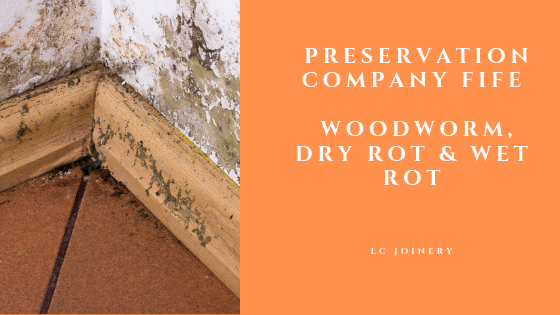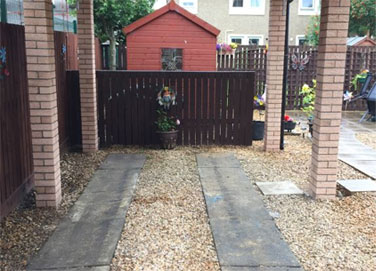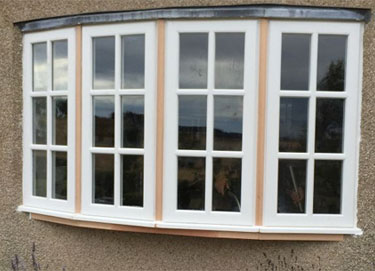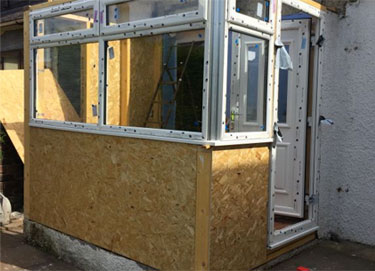Damp proofing is the generic term typically used to describe the installation of preventative measures to stop damp problems occurring within our home.
Timber preservation will occur at some point throughout a property so you need to make sure you speak to a preservation specialist.
However, it is not necessary the right term to describe the actual type of damp affecting the property and often the wrong term used to describe the right damp treatment needed to rectify a damp issue.
There are many different causes of damp within our homes, not just rising damp (the type of damp often associated with damp proofing).
Although most damp issues are much less serious than they actually look, whatever the cause, damp can be bad for our health and the health of our property.
Related content:
Timber Preservation Specialist Fife
With any damp problems, it is important to correctly identify the damp issue you have before going ahead with a form of damp proofing treatment. It can be very costly if a damp problem is misdiagnosed and the wrong treatment has been applied.
There are 3 main areas that us at LC Joinery deal with and they are woodworm, dry rot and wet rot.
Timber Preservation – Woodworm
The term woodworm is an inaccurate one, as ‘woodworm’ is actually a beetle infestation.
The damage caused to the timbers is due to the feeding of beetle larvae
It is important to identify which infestation we are dealing with, as some infestations require no chemical treatment whilst others require more particular attention.
If you think you have woodworm in the property that needs treated, then get in touch with us on 01592 747047.
Timber Preservation – Dry Rot and Wet Rot
Dry Rot
All rot can cause significant damage but it is important to distinguish between dry rot and wet rot.
Dry rot is malignant, which means it will spread in search of fresh timber to attack, even over steelwork, masonry, concrete or through masonry.
This means action taken to eliminate it has to be far more extensive.
There is only one species of Dry Rot.
It occurs when excess moisture penetrates the fabric of the building, raising the adjacent timber moisture content to above 20% of the oven-dry weight.
Dry Rot has the ability to travel through brick walls and concrete floors well away from the source of moisture in search of additional timber.
Dry Rot can be serious and expensive, and immediate action should be taken to arrest the problem and minimise further damage.
Wet Rot
In contrast, wet rots do not have the ability to spread through masonry, and growth is confined to the immediate area of damp and will cease when the moisture is removed.
Quite often when wet rot is found, it is quite common to find wood-boring weevil infestations attacking the timber at the same time.
All Wet Rot occurs when poor ventilation and high levels of moisture content (above 50%) have been allowed to penetrate the fabric of the building, enabling the Wet Rot fungi to cause the structural break down of timbers. Unlike dry rot, wet rot will remain near the source of moisture.
There are many species of Wet Rot, but it is not necessary to identify them as the treatments required are the same for all of them.
It is vital that the masonry is allowed to dry, otherwise the mycelium growth in the wall will continue to spread and will reinfect any new timbers in the vicinity.
Masonry irrigation is not necessary for wet rots as their mycelium growth does not spread through masonry.
How Do You Take Action Against Dry Rot
In the case of dry rot, an extra step is required.
This involves the fungicidal treatment of the masonry.
This is because dry rot mycelium growth will spread behind wall plaster and through the masonry itself.
To treat the mycelium, affected masonry and wall plaster are removed, then an irrigation process is used whereby holes are drilled to half the depth of the wall, at staggered centres around the perimeter of the affected masonry.
Into these holes a masonry biocide is pumped to refusal and then a surface application is applied to all the exposed masonry.
The treatment has the effect of “sterilising” the masonry to prevent further dry rot mycelium growth.
How Do You Take Action Against Wet Rot
Sometimes it is not possible to easily distinguish between species of wet rot.
In practice, this is not really necessary since the same remedial measures are required to treat all of them.
The primary action is to prevent the cause of the damp problem.
Second, the decayed timber needs to be cut back to “sound” timber and any decayed sections repaired. Finally the affected and surrounding timbers should be treated with a fungicidal spray.
Get In Touch With Us
Get in touch with us today if you require a visit to determine what preservation needs you require by calling us on 01592 747047.






Like!! Thank you for publishing this awesome article.